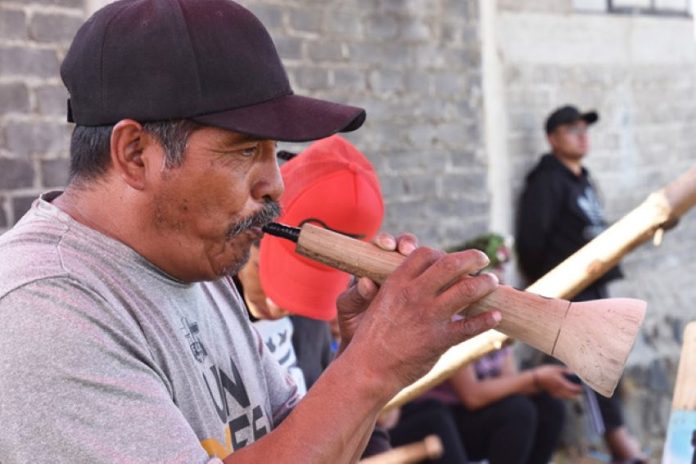The sound of wood being chopped fills the air as people from San Pedro Atocpan, San Bartolomé Xicomulco, Santa Cruz Acalpixca and San Gregorio Atlapulco, four of Mexico City’s pueblos originarios (original pueblos), fan out among the hills of the Sierra Ajusco-Chichinautzin to gather firewood during El Leñerito.
Although this event is relatively recent — it only started in the late 1980s — it’s filled with elements from pre-Hispanic times.
Before the arrival of the Spanish, the 16 pueblos that are now designated as originarios were home to several indigenous groups, most of whom were eventually conquered by the Mexicas (Aztecs), and there was an extensive exchange of goods between them.
“Mexicas from San Pedro were leñeros,” said Javier Márquez Juárez, who has written about the event.
Leñeros is the name given to people who chopped trees and collected firewood; they’re also referred to as leñadores.
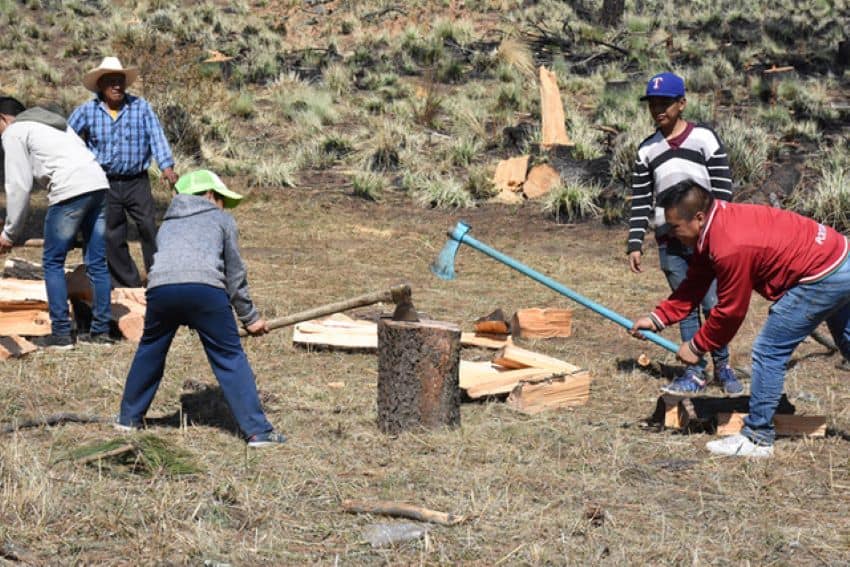
“They would then exchange with or sell to the other pueblos. In San Gregorio, for example, they traded their firewood for water from the lake named Xochimilco.”
The mid-16th century manuscript known as the Santa Cruz Codice depicts a leñero carrying firewood.
El Leñerito, in part, echoes the exchanges from pre-Hispanic times, but it’s also a modern attempt to preserve forests that fill the mountain range.
There are three parts to the El Leñerito event. The first part, chopping firewood, takes place each year three Saturdays before Ash Wednesday.
Early on that Saturday morning, people in the four pueblos gather at the houses of the mayordomos, or lay religious leaders, and wait for the processions to begin. There are nine mayordomos who participate, and they are members of an organization called Señor de las Misericordias (Lord of the Mercies).
The Señor de las Misericordias is a black Christ figure kept in the Santuario del Señor de las Misericordias in San Pedro. The mayordomos take charge of organizing the various events of the day and providing food and refreshments.
The booming of cohetes (bottle rockets) announces the beginning of the processions in the four pueblos. In each, a nicho — a glass-enclosed wooden box with a religious figure inside — is tied onto one person’s back. For this event, the nichos contain a small figure of the Señor de las Misericordias flanked by two horses carrying firewood.
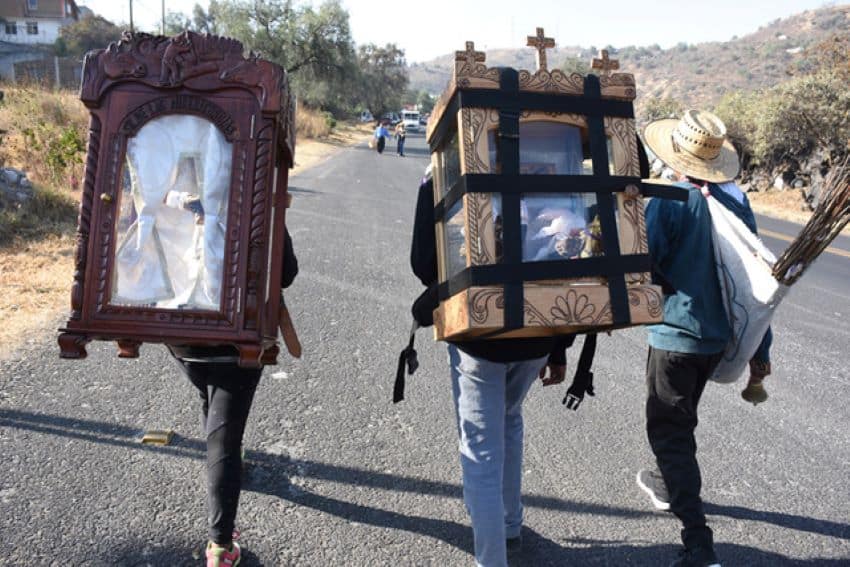
From San Gregorio, the procession makes its way through the pueblo’s streets, hills and outlying fields until, about eight kilometers later, it reaches the home of the mayordomo in San Pedro Atocpan, where food and drink are provided and more people join the procession. A few people travel in cars or pickups.
“Before, people used to only go by horse,” said Raúl Hernández Serralde, who is one of the mayordomos. “We go by horse or walk now to continue this tradition.”
There’s more food at a second stop in San Bartolomé Xicomulco. After a short rest, people pile into pickup trucks and cars for the final leg of the journey, which will take them into the mountains. Once all the processions from the four pueblos arrive there, people head to different areas to chop firewood.
“Trees that are sick or dead have been marked,” said Márquez, “and these will be used for firewood.”
Most of the chopping is done by adults, but they make sure to have children wield axes — under close supervision — so that the tradition continues to be passed on. The firewood is loaded onto trucks and hauled back to a common area, where it’s left to dry until the Sunday after Ash Wednesday.
On that Sunday, it’s time for the second part of El Leñerito: La Bajada (The Descent). People from the pueblos gather again in the mountains to carry the firewood to the home of a mayordomo in San Pedro.
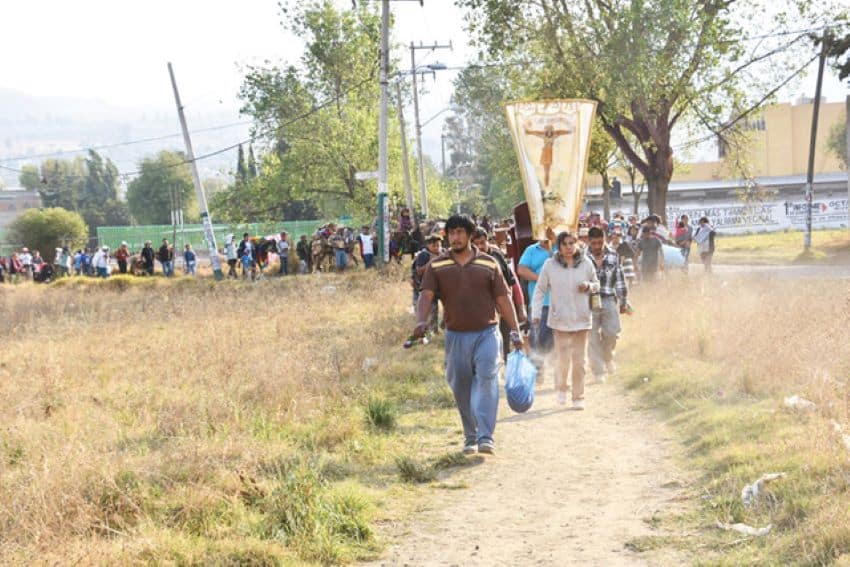
Although a small amount of the wood is brought in cars or trucks, the vast majority is carried either by people or tied on horses.
“People are required to carry the wood,” said Hernández. “It is like a sacrifice to God, an expression of our faith, to give thanks to God.”
It is also a way for people to connect with, and honor, their pre-Hispanic roots.
“When the Mexicas ruled in Tenochtitlán,” said Márquez, “wood from San Pedro was taken there as tribute.”
Aurelia Olivos Navarrete has carried firewood down the mountain for several years.
“It is important for me to do because it has been a tradition for many years,” she said.
Although there are numerous stops along the way for food and refreshments, it’s a tiring trek.
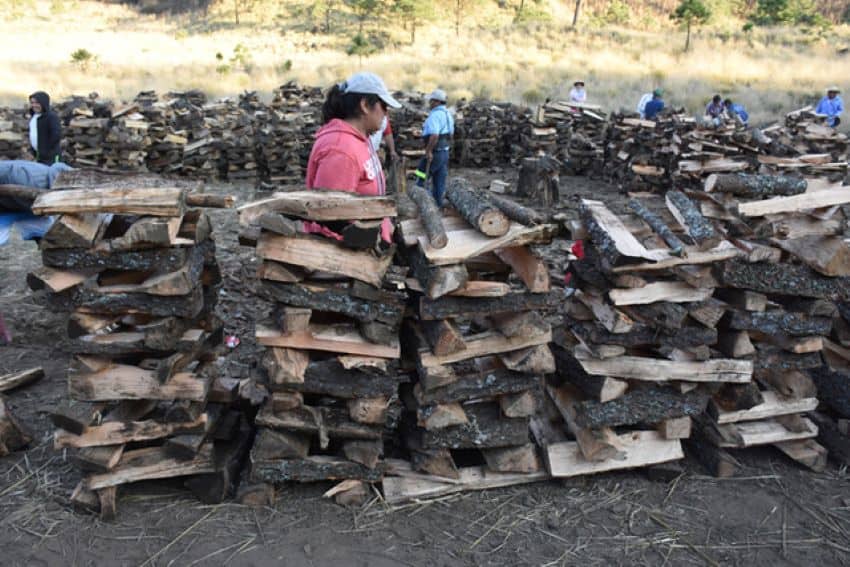
“We have to have faith to carry the firewood,” she said. “It is heavy. If there is no faith, one cannot continue.”
At the penultimate stop, a crown of flowers is placed on each participant’s head while a chirimía, a traditional Mexica flute, is played in the distance.
It takes about seven hours, including the rest stops, to get the firewood from the mountain to the home of the mayordomo in San Pedro, but the long and tiring day finally ends with a big meal and a festive atmosphere. The wood is stored in the mayordomo’s yard and used during the year for cooking during traditional fiestas in the four pueblos. Many Mexican cooks use firewood for cooking, saying it gives the food a better flavor.
The final event in El Leñerito is in July, when trees are planted to replace those that were chopped down. The pandemic prevented that from happening in 2020, and it was unclear if any of the events would take place this year.
This tradition was started a little over 30 years ago, when it was recognized that trees in the mountains were being removed, often illegally, at an ever-increasing rate.
“Cutting down diseased or dead trees for firewood and then planting new ones is a way to care for and respect the land,” said Márquez. “And by involving four pueblos originarios, we recognize and strengthen the connections between the four pueblos.”
The connections stretch back hundreds of years.
Joseph Sorrentino, a writer and photographer, is a regular contributor to Mexico News Daily. More examples of his photographs and links to other articles may be found at www.sorrentinophotography.com. He currently lives in Chipilo, Puebla.
